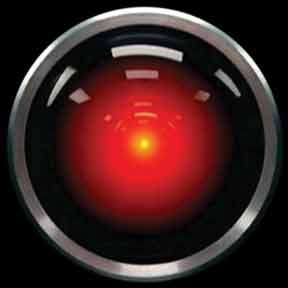Im Sorry, Dave. Im Afraid I Cant Do That Remember that classic line from 2001: A Space Odyssey? Thats the first thing I thought of when one of Garmins engineers was demonstrating the voice recognition function in the new GMA35/GTN series were covering in this issue. I could imagine myself getting into an argument with my semi-intelligent audio panel: “Listen, you pile of transitorized crap, I said switch to comm 1! And my names not Dave!” “Im sorry youre upset, Dave, but I don’t understand your command.” Its all good fun…till the thing does something you don’t want it to. Not that Im suggesting that voice recognition wont work or isn’t a good idea. Field experience will confirm either or both. For the big-picture folks among us, the larger question is what does this kind of automation do for the operation of a light aircraft or the flight experience itself? The reason to ask this is that where this is eventually going is voice control for more functions in the airplane, from basic control setting to comm management to emergency procedures. Its easy to see the potential. But what does it do for you? This brings to mind another movie: Wall-E. Thats the one where robotics have so insinuated themselves into the functions of everyday life that humans have been reduced to pudgy, poorly toned organic blobs that traverse the physical world in bins propelled by conveyor belts. The conveyors are overseen by…robots. Voice actuation gets down to two things: How you engage with the physical world and whether youre a talker or a tool user. Do you prefer texting/instant messaging or would you rather pick up the phone? (I do both and tilt either way, depending on the task at hand.) To me, the test-for-success is whether such innovations erect or remove the natural barriers between your desires and letting the machines you operate know your desires. Ideally, you should be able to think it and have it done. The voice recognition in the new Garmin products doesnt do that, but it gets a step closer to doing that. Theoretically, like a fighter pilot processing data through a HUD and tickling the piccolo on a HOTAS, you can keep your eyes outside the cockpit while changing frequencies or performing other tasks that would otherwise require heads-down time. You improve your information uptake and raise the threshold for overload. Whether this is good or bad depends on whether manual manipulation of a knob or key is part of the way you think, a necessary bit of tedious connection you consider important to being engaged with the machine. Another analogy is dictation versus typing. I absolutely cannot dictate; I have to type to think through what I want to say. Its just part of my cognitive process, limited and flawed though it may be. (I also hate automatic transmissions; give me a five speed, please. It has to do with engagement.) On the other hand, I despise knob twirling, especially for frequency changes or-the worst-scrolling in a flightplan. At the least, the GTNs remove this barrier and reduce the tedium. Its improvements are not just happy to glad. But as for the voice recognition, this is why I think the GTNs represent a subtle, incremental technical step forward, but what could be a rather larger ergonomic step forward. I think its 60/40 on whether pilots will adapt or find the thing is just a software writers parlor trick, with the 60 percent on the plus side. Either way, Garmin has launched an interesting experiment. -Paul Bertorelli 


